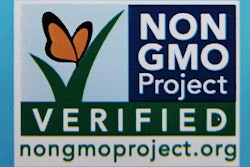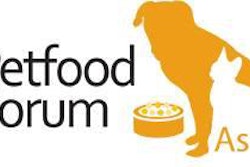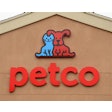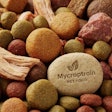
The pet food market saw overall positive news last week, delivered during two webinars. First, GfK’s two leading pet analysts reported that global pet food retail sales grew 4% in 2015, to a total of about US$70 billion. Then Alltech released its now annual global feed survey, which included data showing worldwide dry pet food volume reached 22.59 million metric tons, also a 4% increase over 2014.
In their webinar, Pushan Tagore, vice president of global marketing, pet care, for GfK, and Maria Lange, business group director for GfK’s pet nutrition area, contrasted worldwide pet food sales with those in the US. They started by sharing some regional and country data:
- North America is still the largest pet food region, with US$27 billion in sales (with the bulk of that, US$24 billion, from the US). Both the US and Canada saw sales growth in 2015.
- Europe ranks second but as a region is still seeing only slight growth overall, at a total of US$20 billion sales in 2015. That includes about US$4 billion each for Germany, UK and France; US$2.6 billion for Germany, US$1.5 billion for Spain, US$325 million for the Czech Republic and US$150 million for Greece.
- Most other pet food markets highlighted by GfK enjoyed growth in 2015, including Argentina (US$1 billion in sales), Brazil (US$ 5 billion), South Africa (US$300 million), Russia (US$1.5 billion), China (US$1.3 billion), Australia (US$2 billion) and India (US$200 million). Note that GfK’s data for Russia does not match up with the latest reported by that country’s state statistical service (Rostat) and Federal Customs Service, which has 2015 pet food sales at US$940 million, a decline from 2014.
- While Japan, at 2015 sales of US$6 billion, is once again the second largest pet food market (Brazil took that spot for a few years but has fallen back since the economy there was hit by recession), Japan’s pet food sales are definitely stagnant, GfK said. (Note that Euromonitor International puts the country’s pet food sales at only US$4.8 billion.) Yet, Japan has more pets, 22 million, than children, at 16.6 million!
- The world’s cat and dog population now numbers about 600 million. While Europe slightly edges North America, at 180 million cats and dogs vs. 178 million, 50% of people in North America (mainly the US) own cats or dogs, vs. 24% in Europe.
- Looking specifically at pet food sold in the pet specialty channel—GfK’s sweet spot—dog food accounts for the majority of sales globally, ranging from 68% in Greece to 87% in the Czech Republic. The US has 78% of its pet food sales going to dog food. Interestingly, even in European countries where cats outnumber dogs, dog food still holds the largest share of sales, probably because dog food packages tend to cost more.
- Within pet food categories, dry products have the largest sales, though more of a range is seen here, from 56% in Great Britain to 93% in Greece. Not surprisingly, wet pet food takes 26% of sales in Great Britain (with the rest made up by pet treat sales); I was surprised to see wet pet food accounting for 20% of sales in the US.
In addition to that, I was pleasantly surprised to see that pet food sales in Brazil are still growing, even after leveling off after the latest recession hit. There’s a wealth of other data and information available in the webinar, which was sponsored by Extru-Tech Inc. and presented by Petfood Industry and Watt Global Media. But I’ll share one more set of data here.
Chicken is by far the most popular pet food protein globally. (Or flavor; GfK seems to use the terms interchangeably.) In the eight countries GfK reported on for this measure—the US, Great Britain, France, Spain, Czech Republic, Greece, South Africa and China—chicken was most popular for dry dog food and, except for one (Czech Republic), dry cat food. It also ranked as most popular or among the most popular (some countries and pet food categories had ties) in five of the countries for wet dog food, six for wet cat food and dog treats, and seven for cat treats.
Pet food at 2% of global feed tonnage
That prevalence of chicken as a protein in pet food makes sense, in that poultry is by far the largest category of feed globally, according to Alltech’s fifth annual feed survey. As consumption of chicken—by pets and humans alike—has risen globally, so has the volume of poultry feed production, reaching 463.3 million metric tons in 2015, or 46% of the nearly 1 billion tons of feed produced globally. That represents 6% growth for poultry feed in 2015 and 22% growth since 2011, when Alltech first began its survey.
Aidan Connolly, Alltech’s chief innovation officer, was kind enough to share his data for pet food volume by country with me. Though the company was unable to obtain data for some countries—and during the webinar, Connolly commented on how difficult pet food production volume is to come by because the industry is so competitive, and many producers choose not to disclose their numbers—what they did get seems very reasonable for most markets, based on pet food sales in each. (Probably the most glaring example of data not being available is Thailand, which is home to several large pet food manufacturers and pet food sales of US$736.7 million, according to Euromonitor.)
The only figure that seemed low to me was for Japan, for which Alltech showed 310,000 metric tons of dry pet food produced in 2015. Considering that Japan still has US$5 to $6 billion in retail sales, and the US Department of Agriculture’s latest GAIN report for 2015 showed that about 68% of the country’s pet food sales are for dry products, I suspect its volume is higher.
Other country and regional highlights from the Alltech survey:
- Not surprisingly, the US produced the most feed for pet food, 8.45 million tons, followed by Brazil at 2.43 million tons and France at 1.25 million. China reached 400,000 tons; in fact, all other countries for which data is available were not only below the 1 million ton mark, but also, most ranged between 300,000 and 600,000 tons. Only Mexico came close to 1 million, at 900,000 tons.
- The US production accounted for most of North America’s dry pet food volume, 8.91 million tons. The next largest region was Europe at 5.95 million, followed by Latin America at 5.30 million, Asia Pacific at 2.09 million and Africa at 350,000 tons.
For even more data and insights on the global pet food market, consider registering for Petfood Forum Asia, scheduled for March 30 in Bangkok, Thailand, where Mariko Takemura of Euromonitor will present an update; and Petfood Forum 2016, April 18-20 in Kansas City, Missouri, USA, where Lange of GfK will focus on trends in the US pet food market.
















